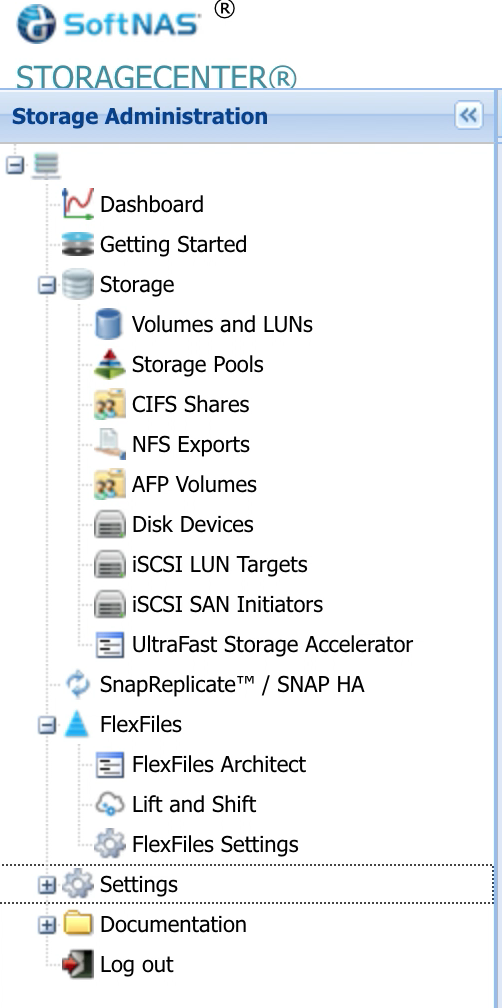Addressing Public Cloud Storage Hurdles w/ SoftNAS
SoftNAS is NAS vendor who makes a rather interesting product. It's a NAS (think FreeNAS, NetApp, etc.) that's built with Enterprise class features and can run anywhere. Traditional storage protocols are exposed to customers - iSCSI, NFS, SMB/CIFS, and AFS. Some people might wonder why anyone would want a traditional NAS in this new cloud-first world, but sometimes an older idea makes sense. SoftNAS works on VMware ESX, Amazon AWS, and Microsoft Azure. It's consistent in each one and because of that, it can create a vendor agnostic storage system.
Overview / Initial Thoughts
In my past, I've worked with NetApp, Equallogic, EMC, and various other NAS/SAN devices. After working briefly with SoftNAS, I can say that anyone familiar with those types of systems will feel right at home. Think of the SoftNAS vm as a "controller" and the local cloud storage as "shelves." The layout and terminology should make sense to anyone with a storage background. That level of knowledge could be comforting to an organization making a transition to the public cloud.
Screenshot of SoftNAS Navigation Menu
Storage Tiering
One of the challenges addressed by SoftNAS is storage performance in the Cloud. When companies first migrate to the cloud, they could find that performance isn't always on par with what they saw in their datacenter because the cloud storage chosen isn't appropriate to meet the demands of the workload. Datacenter storage admins are familiar with creating storage layouts that generate the IOPs required of demanding apps. SoftNAS uses some of the same types of techniques in the way of tiered storage. Traditional NAS / SAN systems would tier flash, SAS, and SATA types of disks. SoftNAS tiers SSD, HDD, and object storage.
Data Migration
The following video from Cloud Field Day 4 details how SoftNAS can be used to migrate data between locations. SoftNAS has a little bit of secret sauce in the form of Apache NiFI. NiFi is interesting in that it allows for logic, routing, and transformation of data at the storage tier. It's tough idea to wrap your head around as these actions typically take place at the application tier. Yet, it's an interesting concept and it's a neat tool to have in the toolbox.
Conclusion
There are customers who can benefit from this technology. It feels odd acknowledging a use case for a NAS hosted in the public cloud, but there are cases where it makes sense. Lifting and shifting certain traditional workloads to to the cloud in an IaaS manner is one. Many IaaS designs leverage storage protocols that are not readily available in the cloud. Moreover, native tiering of storage in the cloud is rudimentary and limited in cases where it exists at all. For instance, AWS allows tiering of data between S3 and Glacier, but that's the extent of tiering at the moment. It's possible this will change over time, but until then SoftNAS is a product that's shipping today.
Disclaimer
This is an independently written article. For full disclosure, I became aware of SoftNAS through my involvement with the Cloud Field Day 4 event. My airfare, hotel, and transportation were paid for by Gestalt IT who produce Tech Field Day events.

